Higher education opportunities in Florida’s prisons are hard to come by. Today, only around 326 students are enrolled in college programs in Florida prisons, according to data provided by colleges. That’s only a tiny fraction of the more than 80,000 people incarcerated in the state. Ten sites offer college programs, including one reentry center and a privately run prison. The Florida Department of Corrections oversees 128 correctional facilities. This article examines Florida's offerings of higher education options for incarcerated students.
This report details the scope of CUN
This report details the scope of CUN
This report examines both the history and scope of college-in-prison programs across New York State. This report also describes the existing programs and incorporates the perspectives of DOCCS officials, college administrators, and incarcerated students.
This report examines both the history and scope of college-in-prison programs across New York State. This report also describes the existing programs and incorporates the perspectives of DOCCS officials, college administrators, and incarcerated students.
This guide is part of an effort to provide college providers with the necessary tools for developing programs that are responsive to the unique environment of correctional facilities. While designed specifically for college programs that operate in New York State (NYS) Department of Corrections and Community Supervision (DOCCS) facilities, this guide may also be useful for organizations and colleges outside of New York that wish to establish or enhance college-in-prison programs.
Access to education is in high demand among the incarcerated population. There are clear benefits to students who are incarcerated, their families and communities, public safety, and safety inside prisons. Yet the gap in educational aspirations and participation has been largely driven by a lack of capacity due to limited funding.
Access to education is in high demand among the incarcerated population. There are clear benefits to students who are incarcerated, their families and communities, public safety, and safety inside prisons. Yet the gap in educational aspirations and participation has been largely driven by a lack of capacity due to limited funding.
Access to education is in high demand among the incarcerated population. There are clear benefits to students who are incarcerated, their families and communities, public safety, and safety inside prisons. Yet the gap in educational aspirations and participation has been largely driven by a lack of capacity due to limited funding.
Access to education is in high demand among the incarcerated population. There are clear benefits to students who are incarcerated, their families and communities, public safety, and safety inside prisons. Yet the gap in educational aspirations and participation has been largely driven by a lack of capacity due to limited funding.



